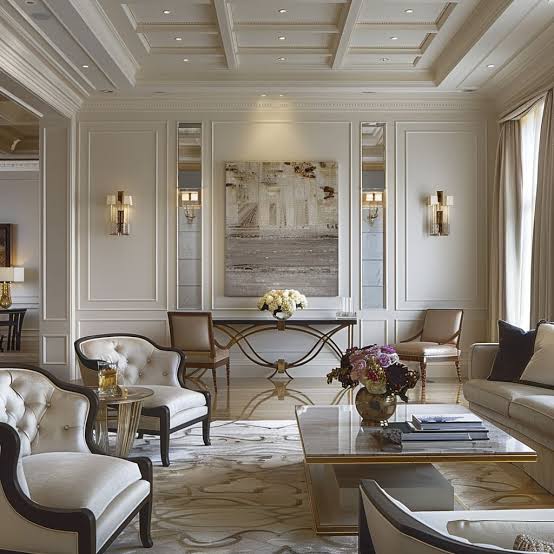Art has been an integral part of home decor for centuries, reflecting cultural shifts, technological advancements, and personal tastes. From classical art that adorned the homes of the elite to contemporary pieces that fit into modern aesthetics, the evolution of art in home decor tells a fascinating story of creativity and innovation. This article explores how art trends have influenced interior design over the centuries and offers practical advice on how homeowners can integrate various art styles into their modern decor.
Classical Art: Timeless Elegance
Classical art, characterized by its focus on harmony, proportion, and realism, has been a staple in home decor since the Renaissance. Paintings by masters like Leonardo da Vinci, Michelangelo, and Raphael often featured religious themes, portraits, and scenes from mythology. These works were typically displayed in grand homes and palaces, symbolizing wealth, education, and cultural refinement.
Incorporating classical art into modern home decor involves striking a balance between old and new. One way to achieve this is by using classic paintings as focal points in a room with contemporary furnishings. For instance, a replica of a Renaissance painting can add depth and history to a minimalist living room. Additionally, classical sculptures or busts can serve as elegant accents on modern shelves or tables.
Baroque and Rococo: Opulence and Ornamentation
The Baroque period, which followed the Renaissance, introduced a more dramatic and ornate style of art. This era was characterized by bold colors, dynamic compositions, and a sense of movement. Artists like Caravaggio and Peter Paul Rubens created works that were meant to evoke emotion and awe. The Rococo period, which succeeded Baroque, softened these dramatic elements with lighter colors, playful themes, and intricate details.
To incorporate Baroque or Rococo art into contemporary decor, consider using pieces with rich textures and elaborate frames. A Baroque painting with a gilded frame can add a touch of opulence to a modern dining room. Similarly, Rococo-inspired wallpaper with delicate patterns can create a whimsical and sophisticated atmosphere in a bedroom or powder room.
Neoclassicism and Romanticism: Return to Simplicity
In reaction to the excesses of the Baroque and Rococo periods, the Neoclassical movement emerged in the mid-18th century. This style drew inspiration from the art and architecture of ancient Greece and Rome, emphasizing simplicity, symmetry, and order. Artists like Jacques-Louis David and Jean-Auguste-Dominique Ingres focused on heroic themes and idealized forms.
The Romantic period, which followed Neoclassicism, offered a counterpoint with its emphasis on emotion, nature, and individualism. Artists like Caspar David Friedrich and Eugène Delacroix created works that celebrated the sublime and the picturesque.
Modern homeowners can integrate Neoclassical art by choosing pieces that emphasize clean lines and classical themes. A Neoclassical print or sculpture can enhance a contemporary living space with its timeless appeal. Romantic art, with its evocative landscapes and expressive brushstrokes, can add a sense of drama and passion to a modern home. Consider using Romantic paintings in spaces meant for relaxation and contemplation, such as bedrooms or reading nooks.
Modernism: Breaking the Mold
The late 19th and early 20th centuries saw the rise of Modernism, a movement that sought to break away from traditional forms and techniques. This period encompassed a variety of styles, including Impressionism, Cubism, and Abstract Expressionism. Artists like Claude Monet, Pablo Picasso, and Jackson Pollock challenged conventions and explored new ways of seeing and representing the world.
Incorporating modernist art into home decor offers endless possibilities. Abstract paintings can serve as bold statement pieces in minimalist interiors, while Impressionist works can bring a sense of lightness and fluidity to a space. Modernist sculptures, with their innovative forms and materials, can add a touch of avant-garde flair to any room.
Contemporary Art: Eclectic and Inclusive
Contemporary art, which encompasses art created from the mid-20th century to the present, is marked by its diversity and experimentation. This period includes movements such as Pop Art, Minimalism, and Street Art. Artists like Andy Warhol, Mark Rothko, and Banksy have pushed the boundaries of what art can be and how it can be experienced.
The WikiArt Store offers a wide range of contemporary art pieces that can fit various tastes and interior styles. Homeowners can experiment with different mediums, from vibrant pop art prints to sleek minimalist sculptures. Contemporary art allows for personal expression and can be used to create a dynamic and ever-evolving home environment.
Integrating Various Art Styles into Modern Decor
Successfully integrating various art styles into modern home decor requires a thoughtful approach. Here are some tips to help you blend classical, modern, and contemporary art in your home:
- Create a Cohesive Theme: Choose a unifying theme or color palette that ties different art styles together. This can create a harmonious look even with diverse pieces.
- Mix and Match Frames: Use a variety of frames to add visual interest and contrast. For example, pair a Baroque painting with an ornate frame next to a minimalist abstract print in a simple frame.
- Balance Old and New: Combine antique and modern furniture with art pieces from different periods. This can create a layered and eclectic aesthetic that feels curated and intentional.
- Consider Scale and Placement: Pay attention to the size and placement of art pieces. Large works can serve as focal points, while smaller pieces can be grouped together to create a gallery wall.
- Personalize Your Space: Ultimately, your home should reflect your personal taste and style. Choose art pieces that resonate with you and tell your unique story.
By understanding the evolution of art in home decor and experimenting with different styles, homeowners can create spaces that are not only beautiful but also rich in history and meaning. Whether you prefer the grandeur of classical art or the boldness of contemporary pieces, there are endless ways to infuse your home with artistic inspiration. Visit the WikiArt Store to explore a diverse collection of art that can help you achieve your desired look.





